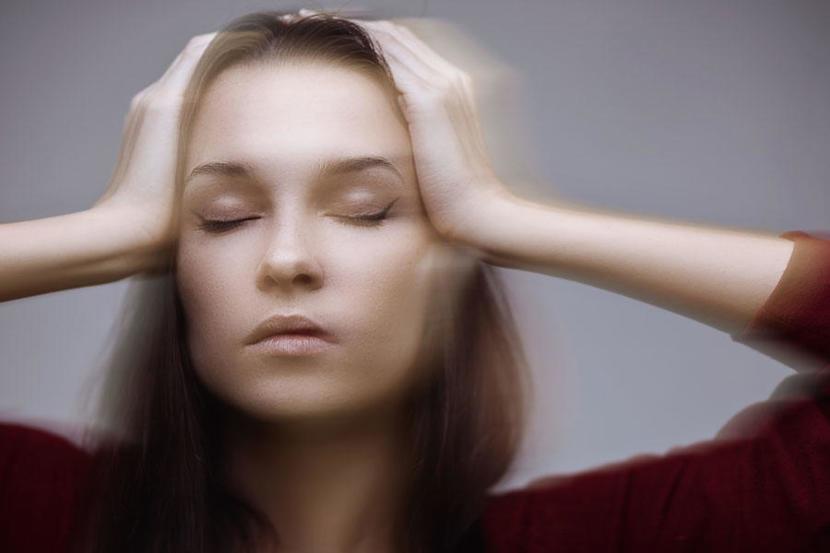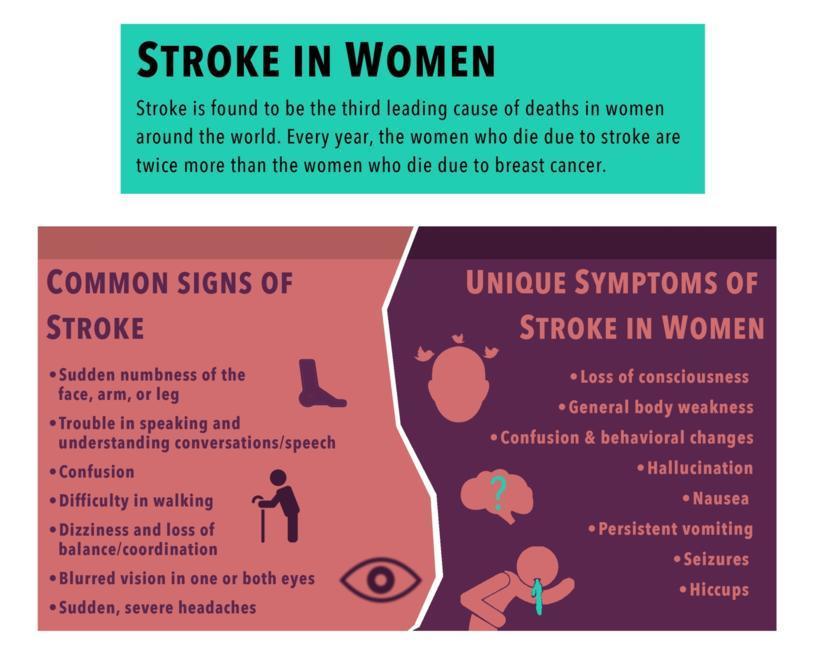The Signs of Stroke in Women

Stroke is found to be the third leading cause of death in women around the world. As women generally live longer than men, the effects of a stroke affect women more than men. Women also live longer in a healthcare facility after having a stroke than men do.
Women are more prone to a stroke because of a number of factors. These include a longer lifespan, stress, high blood pressure, pregnancy, and birth control pills.
Common signs of a stroke
Understanding the common signs of a stroke is important as far as the diagnosis, treatment, and management is concerned. Once you are well-informed about the signs, it will be easy to recognize them. If you recognize one or more of the symptoms below, you should seek emergency medical attention. Remember, every second counts.
Signs include:
- Sudden numbness of the face, arm, or leg
- Trouble speaking and understanding conversations/speech
- Confusion
- Difficulty walking
- Dizziness and loss of balance/coordination
- Blurred vision in one or both eyes
- Sudden, severe headache with an unknown cause
Unique symptoms of a stroke
Women can exhibit unique symptoms that men sometimes don't. These include:
- Loss of consciousness
- General body weakness, especially in the legs
- Confusion, unresponsiveness, and disorientation
- Sudden unusual behavioral changes
- Unusual agitation
- Hallucination
- Nausea
- Persistent vomiting
- Seizures
- Hiccups
These unique symptoms are confusing, especially because they are not immediately recognized as symptoms of a stroke. This can delay the treatment, which can be fatal. Stroke treatments are most effective when administered within the first three hours of symptoms being observed.
Unique risk factors
The following are the risk factors for a stroke in women:
- Birth control pills: The risk of a stroke is higher in women using oral contraceptives, and is even higher if women are also abusing drugs, consuming excessive alcohol, and are chain smokers.
- Pregnancy: During pregnancy, the risk of getting a stroke is higher due to the changes in body functioning, like high blood pressure and heart complications.
- Hormone replacement therapies: If you are taking hormonal replacement therapy, a combined hormone therapy featuring progestin and estrogen are used to alleviate menopausal symptoms.
- Migraine headaches with aura: Statistics indicate that migraines increase the risk of getting a stroke by more than two times.
- High blood pressure: This is one of the factors that increase the risk of a stroke in both men and women, but, for women, this is more severe. The risk is even higher in women with high blood pressure who take birth control pills.
- Preeclampsia: This is a condition that develops in pregnant women after 20 weeks of their pregnancy. This not only increases the risk of a stroke, but it can also be a fatal and life-threatening situation for the mother and child. The first sign of this condition is high blood pressure, and it can begin with gestational diabetes, which is a type of illness that can occur anytime in the mid-pregnancy stage.
- Atrial fibrillation: The inconsistent fluttering of the top chamber of the heart slows down the flow of blood to the lower chamber, where the heart pumps the blood to the other parts of the body. The blood gets collected in the atria and there can be clotting of blood. This is one of the biggest risk factors that can affect any gender, but it is worse in women.
- Loneliness and depression: Isolation, depression, and personal and professional stress are all linked to high blood pressure. This is one of the major risk factors that can cause a stroke. These feelings not only affect someone's psychological health but also their physical health.
What should be done during a stroke?
It is important to be aware of the signs and symptoms of a stroke so that it is easy to know if you or anyone near you is having a stroke. This will allow you to act promptly. The National Stroke Association has come up with a very simple strategy for identifying the symptoms of a stroke. The acronym F.A.S.T describes the three major symptoms of a stroke and calls for action.
- F (Face): Check if one side of the face is drooping
- A (Arms): See if one arm drifts downward or if there is any weakness
- S (Speech): See if there is any difficulty with speech or if the speech is slurred
- T (Time): If you feel that any of the above three symptoms are visible; it’s time to act fast and call for immediate medical attention.
In case of a stroke, every second is important, so one must act quickly. The more you wait to seek medical attention, the more the chances of the stroke lead to brain damage.
Initially, if you feel you are having a stroke, you may think of driving to the nearest hospital. But, it is best to call for emergency services and wait for them to arrive at your location. Once they arrive, they can provide you with immediate medical attention and help you reach the hospital. At the hospital, the doctor will check your symptoms and also make a note of your medical history. They will perform a physical examination and ask you to take a few tests before diagnosing the cause of the symptoms.
Treatment options for stroke
The treatment options vary based on the type of stroke:
-
Ischemic Stroke: This is the most common type of stroke, and this is where there is no flow of blood to the brain. The doctor will recommend a tissue plasminogen activator (tPA) medication that will help break the clot and ensure smooth blood flow. The medication must be given within four hours from when the first symptoms were visible. Only then will this medication be effective. Another option is administrating blood thinners or any other anticoagulant medication that will stop the platelets from forming into clots and blocking the blood flow.
The other treatment option is surgery to remove any blood clots to allow the flow of blood to the brain.
-
Hemorrhagic stroke:
- Aneurysm: The treatment option is a surgery to restrict the blood flow to the aneurysm.
- High blood pressure: The patient will be provided medication to bring the blood pressure under control and stop the bleeding.
- Faulty arteries and cracked veins: Doctors will treat this by repairing the arteriovenous malformations to avoid any further bleeding.
Recovery from stroke
Studies have shown that women take longer to recover from a stroke than men. Women are more prone to experiencing the following:
- Any type of disability related to the stroke
- Impact on daily activities
- Depression
- Tiredness
- Mental impairment
- Effect on the quality of life
This could be due to less physical activity before stroke or depression symptoms.
Prevention of stroke
Every year, more women die from a stroke than breast cancer. It is highly important to be aware of the symptoms of stroke and to also take care of your overall health.
Some of the preventive measures for stroke are as follows:
- Follow a balanced diet
- Maintain weight and avoid being over or underweight
- Exercise regularly
- Quit smoking
- Give time for hobbies like knitting, yoga, meditation to help relieve stress
Women should take more preventive steps due to the unique risk factors that they are prone to. This would mean:
- Continuously monitoring blood pressure during pregnancy
- Compulsory screening of atrial fibrillation for women above 75 years
- Checking for high blood pressure before starting birth control pills
Final thoughts
The recovery from a stroke will vary for every woman. Physical therapy may be useful to help women learn again any skills they lost because of the stroke. Some women learn again how to walk and talk within a few months of recovery. But, some take more time. During this phase, it is important to keep yourself motivated and follow a healthy lifestyle. This will not only help you recover from the stroke, but it will also help prevent strokes in the future.
















